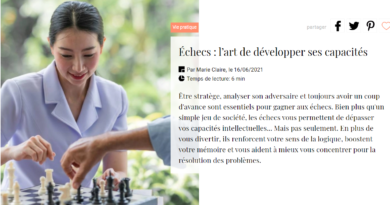Play and its Importance at School
by Dr. C. Uvencio Blanco Hernández

“In the educational ecosystem, games are very useful because they work as teaching strategies, so the main objective of the game is to increase and stimulate students towards a more creative and fun teaching and learning process”.
Play, cultural expression
In every civilisation and place children play as soon as they have the opportunity, doing so in a totally natural, deliberate and spontaneous way. It is part of their lives and perhaps one of the few things they can decide for themselves.
Play is the most important activity for children’s development. Through play, they connect knowledge they have already acquired with new knowledge, thus forming individual learning processes.
The term “play” designates a generic category of diverse behaviours and constitutes a particular form of interaction of the child with its environment, which is qualitatively different from that of an adult.
Children learn from relationships with peers, significant adults and the world around them. Through these interactions they experience a full range of their senses and feelings, how their bodies move through space and how their imagination can create alternative worlds of existence.
Play is a necessity, a vital contributor to human equilibrium, it is at once activity, adventure and experience: a means of communication and release in a permissible form, play is a complete educational process, indispensable to the child’s physical, intellectual and social development. In this sense, play itself implies a learning process; it is a universal activity and through it, children learn and develop continuously, resulting in healthy and well-balanced individuals through play. Researchers such as Moore, Goltsman and Iacofano (1992), point out that “Good quality play opportunities have a significant impact on child development”.
But play also involves getting to know the environment and relating to the surrounding reality, gradually integrating into it. It is expressing and sharing in actions and then verbalising what is internal.
Play develops capacities
Through play, children prepare themselves for future life, to achieve goals, to feel satisfaction, to discharge energies, to get relief from their frustrations, and to generate a fun space for growth.
The play component favours the development of skills and personal balance, strengthening attitudes and values, such as respect for one’s own rights and those of others, learning to agree, to reach consensus, to know how to wait, to argue instead of fighting. Motor skills will be developed in countless activities and moments of play.
Thus, children benefit from their participation in play; there the creative expression of thoughts, feelings and emotions, as well as physical demands, interact in the dynamic process of play. In this way, play involves the child as a whole.
In fact, some research supports the idea that, in the early years of life, play, as an educational medium, is a very important element because it contributes greatly to cognitive, social, emotional and personality development. Through play, children enrich their minds, stimulate their imagination, create situations and find solutions to them.
On the other hand, many changes have been observed in children’s play over the last six decades; changes in form, content, place where it takes place, etc. In most large cities in the West, play has gone from being almost exclusively an outdoor activity to one that is often located indoors in front of televisions, computers, tablets, phones and other devices.
For example, teachers have observed that children who play chess tend to show higher self-esteem, suffer less depression and anxiety. The game also acts as a non-pharmacological therapy, effective in reducing stress, sleep disorders, depression, anxiety and other disorders that arise throughout life.
In the educational ecosystem, games are very useful because they function as teaching strategies, so the main objective of the game is to increase and stimulate students towards a more creative and fun teaching and learning process.
Games should be considered as an important activity in the classroom, since they provide a different way of acquiring learning, they provide relaxation and recreation for the student, games allow the participant’s interest to be oriented towards the area in which they are involved in the playful activity.
The teacher with initiative invents games that are adapted to the interests, needs, expectations, age and pace of learning. For example, games of imitation, hunting and chasing should predominate at this stage. Play brings the joy of movement and symbolic satisfactions and meets the needs of the learners.
Source:
Blanco, U. (2023) Ajedrez, ciencia cognitiva y ajedrez. Amazon.com.


